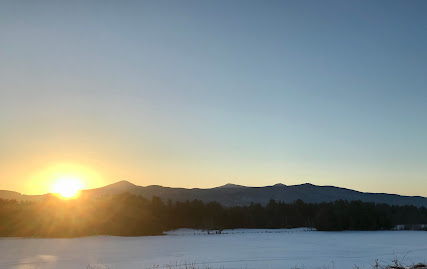Light reflected from
mountain-ridges in shaded
portions of the moon.
now brightly lit by the sun –
fore-glow of the year.
March 26, 1860
Shadows of ripples
passing over yellow sand
in a sunny brook.
The yellow sands of
a lonely brook – the shadows
of rippling water.
March 26, 1860
A mackerel sky
of pine boughs sunny above
and shaded beneath.
March 26, 1860
March 26, 2018
One of the most interesting sights this afternoon is the color of the yellow sand in the sun at the bottom of Nut Meadow and Second Division Brooks. The yellow sands of a lonely brook seen through the rippling water, with the shadows of the ripples like films passing over it. March 26, 1860
The yellow sands of
a lonely brook seen through
the rippling water.
By degrees you pass from heaven to earth up the trunk of the white pine. See the flash of its boughs reflecting the sun, each light or sunny above and shaded beneath, even like the clouds with their dark bases, a sort of mackerel sky of pine boughs. March 26, 1860
The brown season extends from about the 6th of March ordinarily into April.The first part of it, when the frost is rapidly coming out and transient snows are melting, the surface of the earth is saturated with moisture. The latter part is dry, the whitish-tawny pastures being parded with brown and green mosses (that commonest one) and pale-brown lecheas, which mottle it very pleasingly. This dry whitish-tawny or drab color of the fields — withered grass lit by the sun — is the color of a teamster’s coat. March 26, 1860
If you make the least correct
observation of nature this year,
you will have occasion to repeat it
with illustrations the next,
and the season and life itself is prolonged.
A Book of the Seasons, by Henry Thoreau~edited, assembled and rewritten by zphx © 2009-2017
"A book, each page written in its own season,
out-of-doors, in its own locality.”






No comments:
Post a Comment